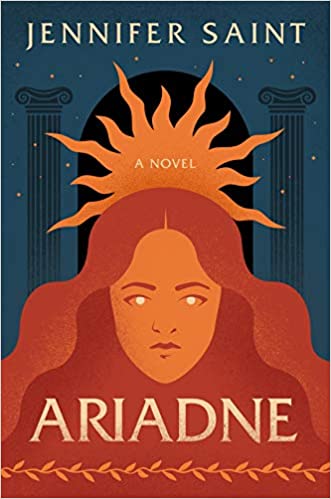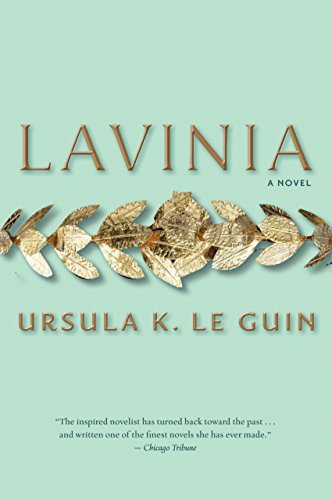The Women of Mythology Are Reclaiming Their Stories
- Anjali Khatri
- Jan 11, 2022
- 3 min read

Note: The author recognizes that queer and non-binary people are also marginalized identities within the Western Classics, who deserve to tell their stories. This article focuses on women because of the blatant acts of violence committed against them as well as their villanization within Greek and Roman myth.
Artists across time, including Buenvento Cellini, Salvador Dali, and Caravaggio, have been fascinated by the myth of Perseus and Medusa. In statues and paintings, they depict Perseus as he decapitates the gorgon Medusa and emerges a hero. He returns home to Argos with Medusa’s head on his shield. The artists portray Medusa as a monster, deserving of her fate. In the myth, Medusa’s visage is so terrifying, that she literally petrifies all who glimpse her, turning them into stone. By killing her and using her head against enemies in battle, Perseus does the world a favor.
A closer examination of Medusa’s story, however, reveals a less sanitized version of the myth. In the Roman poet Ovid’s telling, Medusa, a priestess of Athena (the goddess of wisdom), was widely admired for her beauty and piety to the goddess. Her charm was such that she attracted the attention of Poseidon, god of the sea. Though Medusa remained firm in her vow of celibacy to the goddess, the sea god would not take no for an answer. He raped Medusa within Athena’s temple itself, provoking the wrath of the goddess. Having no power over her uncle Poseidon, Athena decided to punish Medusa for breaking her vow of chastity. She cursed her, transforming Medusa into a hag with snakes for hair and a face so horrible, it turned all that saw it into stone.
Though Ovid lived over 2,000 years ago, his version of the Medusa myth in Metamorphoses echoes the struggles of women today and the culture of victim-blaming that surrounds survivors of assault. Additionally, Athena’s role in the story shows how women, too, can be active participants in the patriarchy. Focusing on Medusa the woman, rather than Perseus the hero, unveils a story of woman attempting to protect herself, and who in return is not only murdered, but has her corpse weaponized in service to her killer.
Greek and Roman mythology abound with misunderstood female characters like Medusa — Helen, Briseis, Arachne, and Dido to name a few. Because the canon of these myths was determined by men, most of these women were deprived of their agency and subjected to tragedy. Some, like Medea and Clytemnestra, are portrayed as villainous caricatures. A recent movement amongst feminist Classicists is attempting to change these narrow interpretations by retelling the stories of mythological women. Author Madeline Miller tells the story of Circe, a minor goddess skilled in magic. Rather than existing solely to advance the plot of the Odyssey, Miller’s novelization of Circe portrays her with agency and initiative; she takes action when she and her island of Aeaea are in danger. Similarly, Ariadne, in Jennifer Saint’s retelling, defies her family by helping the hero Theseus defeat the minotaur. She does not perish from grief after being abandoned by Theseus on Naxos. Instead, she moves on, living a full life. The Trojan Brises, too, in Pat Barker’s The Silence of the Girls, learns medicine and healing despite being enslaved by her Greek captors.
Greek and Roman mythology continue to shape the Western cultural consciousness. Thus, Western society must grapple with the power structures that the so-called Classics reinforce. The poets writing and retelling Greek and Roman myths were men. Homer (if he existed), Virgil, and Hesiod lived during a time where women were treated as property. Thus, Greek and Roman myths of women who were raped, abused, enslaved, murdered, and widowed at whims of gods and men reflected the reality of the time. Men would invariably feature as the protagonists of these stories, despite their behavior towards women.
Even after the poets passed on, men throughout history continued to retell these dominant narratives through different mediums of art, including literature, theater, and sculpture. Movies like The Clash of the Titans (2010) and Jason and the Argonauts (1963) glorify the heroism of Perseus and Jason, while excluding their mistreatment of women. Immortals (2011), which tells the story of Theseus’ defeat of the Minotaur, cuts out Ariadne’s role altogether. Thus, the study of the Western Classics has been dominated by men for centuries. Romanticizing the stories of Odysseus, Aeneas, Heracles, etc., perpetuates the patriarchal narrative of mythology and marginalizes women’s voices. Reexamining myth, as told for and by women, empowers women of the present to claim ownership of and space within the Classics. Stories and myth are a reflection of the societies that tell them, and without women and their voices, those stories show only half the picture.
Recommended Reading
To learn more about the women reclaiming mythology, check out the following titles:
I also recommend listening to Liv Albert’s podcast, Let’s Talk About Myths, Baby!, starting with her episode on Arachne and Medusa.


















Comments